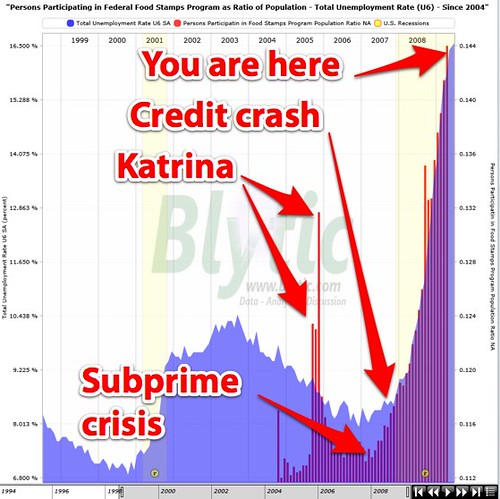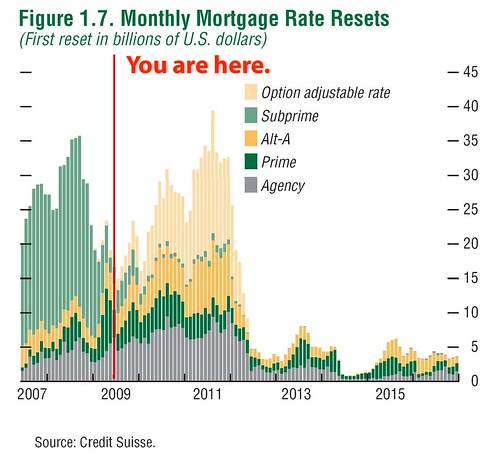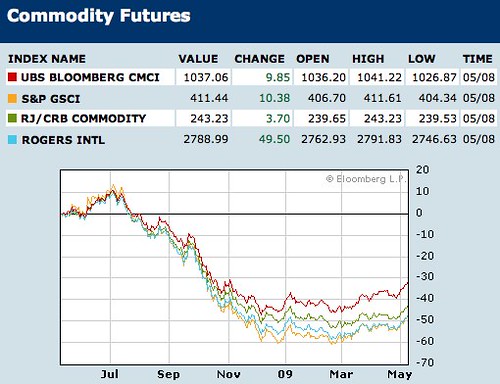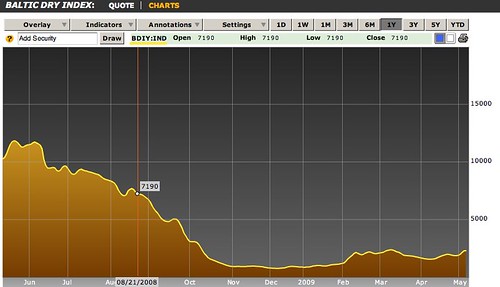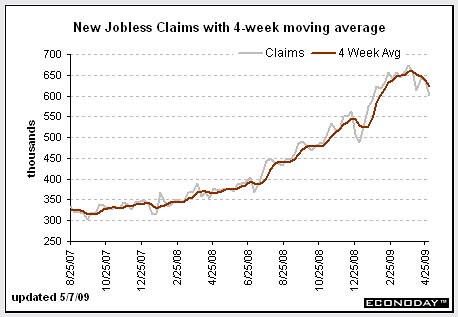I present two charts.
First, via Blytic, a look at food stamp usage and unemployment.
You don’t have to be a rocket scientist or an economist to figure out that this recession still has legs and a long way to run before we even begin to approach “normalcy”. Anyone talking about recovery is being a little on the premature side, don’t you think?
Second, via Barry Ritholtz:
Again, you don’t need a Ph.D. in economics to figure out that the housing bubble still has a long way to come down. A 4 year old with a ruler and a crayon could diagram out the long term mean and see that when it comes to reversion to mean on a multi-decade basis, we are still far, far away from the mean, which indicates that housing prices still have a long way to drop.
When you strip away the spin of government press flacks and media outlets desperate to gin up advertising revenue by getting consumers to spend unwisely, when you reveal the data as opposed to the opinion, the news is less than good, and the calling of a bottom, recovery, and green shoots is premature at best.
So what does this mean for you?
If you’ve been getting by, keep doing what you’ve been doing, only moreso. Thrift is the new black. Keep watching the fridge and the toilet paper.
If you’ve not been getting by, I’m sorry. There’s not much advice or counsel I can offer that hasn’t already been thrown at you a dozen times over. Consider putting a few hours into setting up some affiliate stuff, knowing that a payout if successful is probably 30-60 days away, but it might be a little supplementary help. If you’re job hunting, take what you can get.
Above all else, if there’s a single concept you must get sooner rather than later, it’s that positive cash flow means everything in this environment, whether it’s your business or personal life. Positive cash flow is pretty much all that matters for the short term. Get more money coming in than going out.
Did you enjoy this blog post? If so, please subscribe right now!
Get this and other great articles from the source at www.ChristopherSPenn.com
